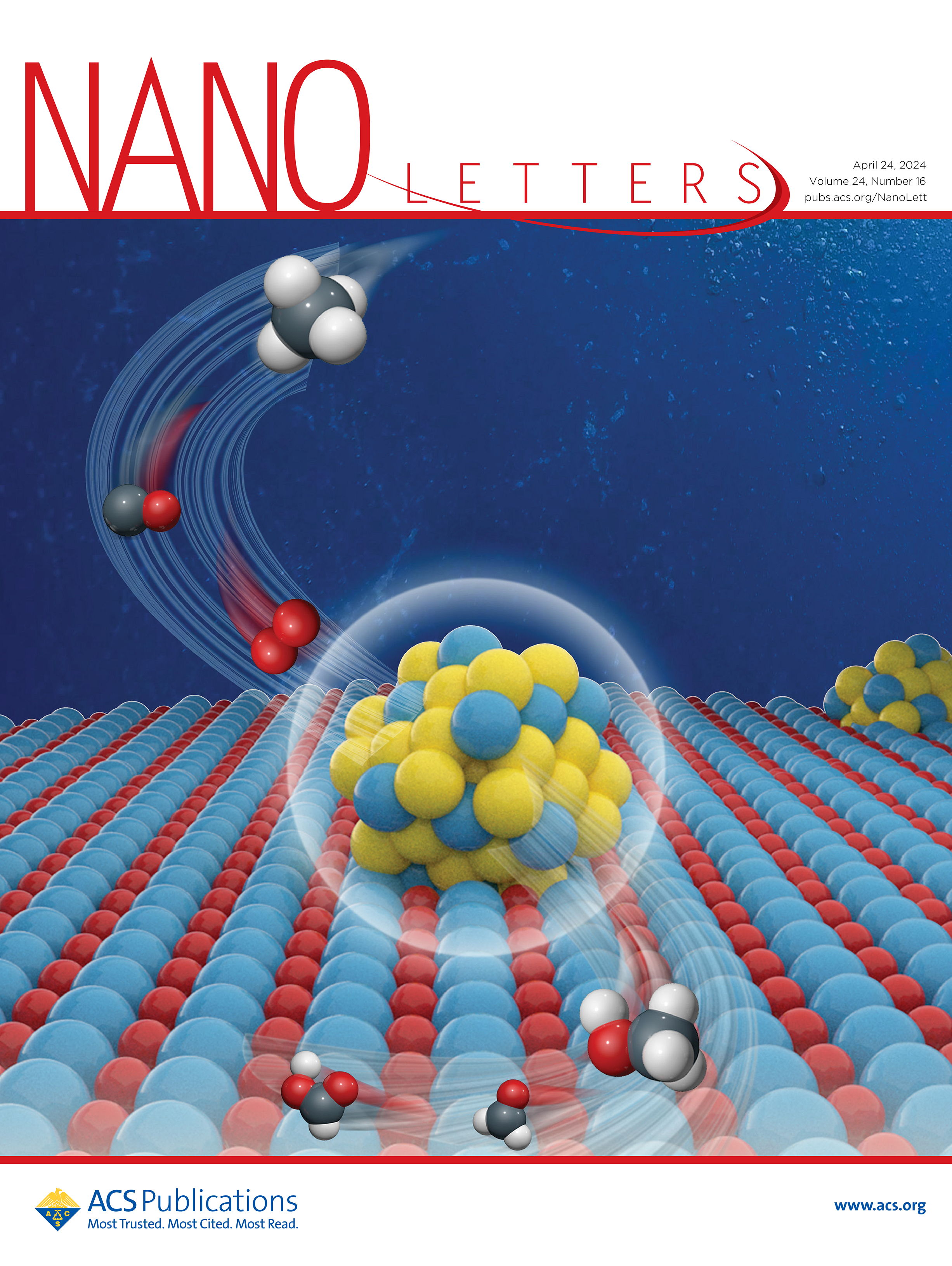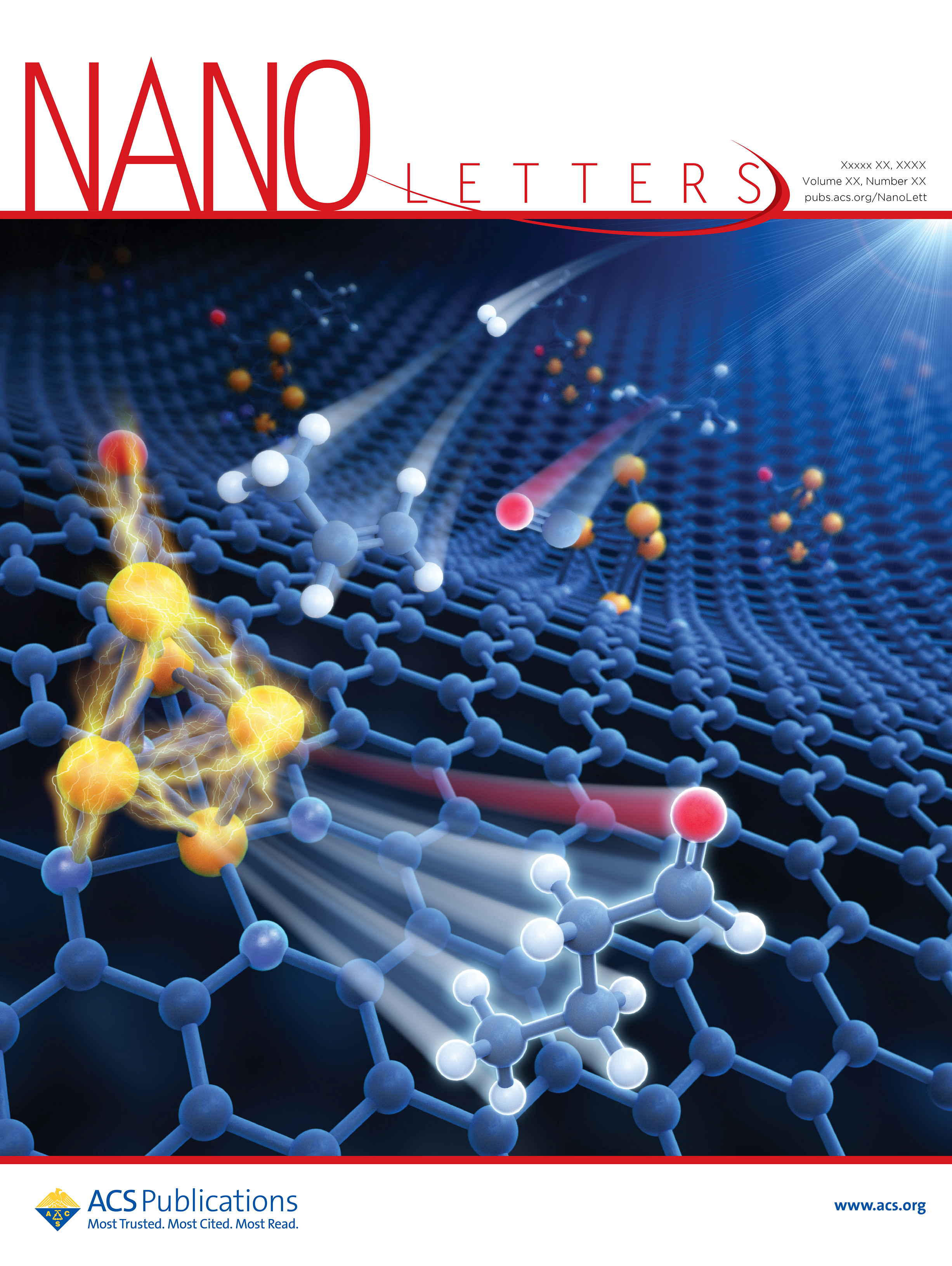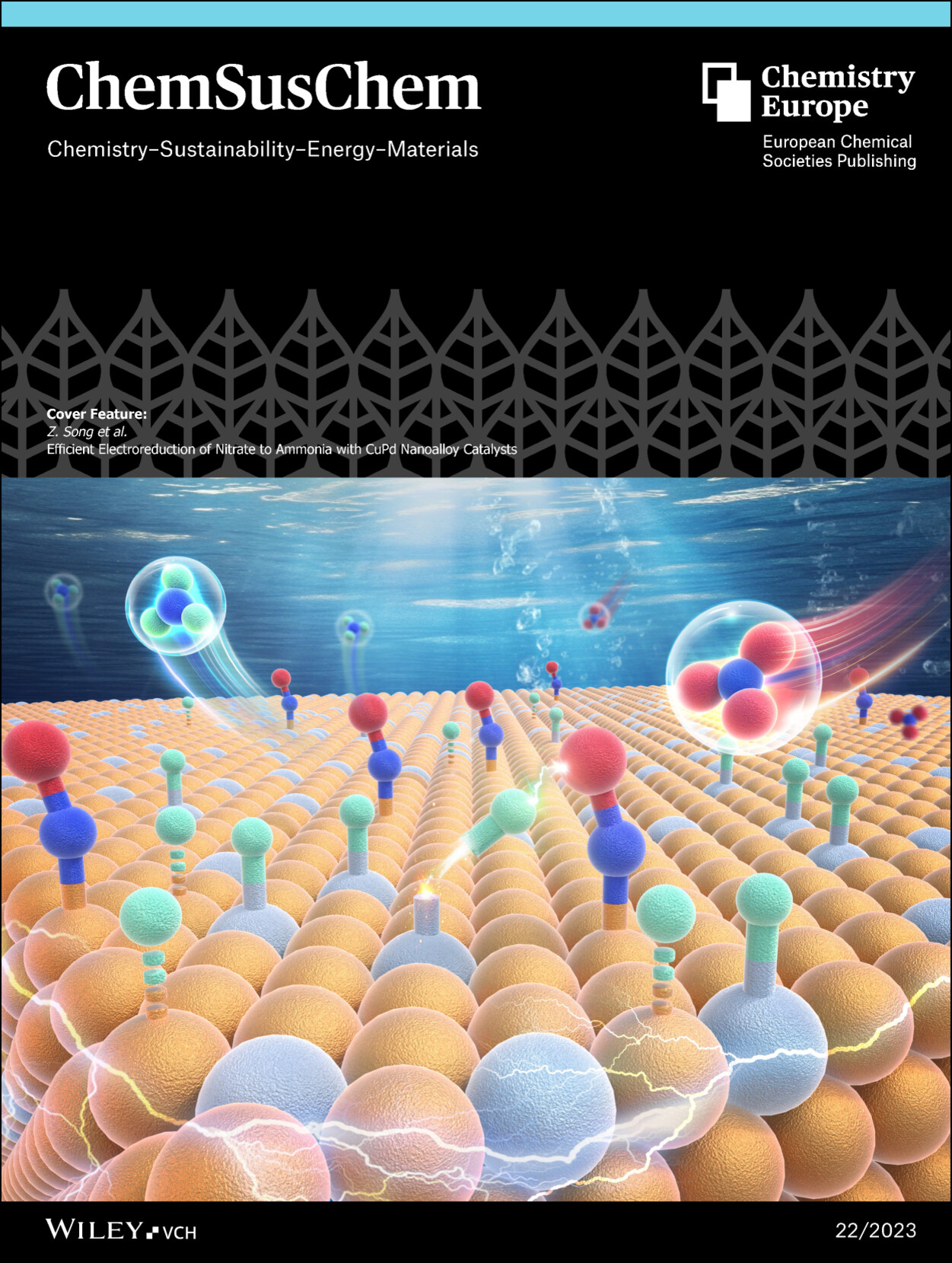 |
This cover was designed by Nan Zhang, Xu Li, Jingyue Liu, and Jie Zeng, etc. for an article published in Nano Lett. (Volume 25, Issue 10, February 10, 2025). The cover depicts the CO oxidation on amorphous CeOₓ nanoislands and crystalline CeOₓ nanoislands. CeOₓ nanoclusters with varying degrees of crystallinity are synthesized through a calcination-treatment protocol. Lattice oxygen in crystalline CeOₓ nanoclusters facilitates the efficient transformation of CO molecules adsorbed on Pt clusters, whereas oxygen in amorphous CeOₓ nanoclusters requires overcoming a significant energy barrier to react with CO. |
 |
This cover was designed by Yizhen Chen, Jiankang Zhao, Jie Zeng, etc. for an article published in Nat. Chem. Eng. (Volume 2, Issue 1, January 17, 2025). The cover depicts the structure of a Pt/CeOₓ/SiO₂ catalyst featured by the atom-precise low-nuclearity Pt clusters on CeOₓ nanoisland nests. The clusters maintained their nuclearity and were resistant to sintering in H₂ at temperatures of ≤600 °C and atmospheric pressure. Catalysis tests demonstrate that these Pt clusters are more active than mononuclear Pt, also exhibiting higher steady-state activity than larger and smaller platinum clusters for ethylene hydrogenation. |
 |
This cover was designed by Yue Xin and Jie Zeng for an article published in Clean Coal Technology (Volume 30, Issue 12, December 12, 2024). The cover depicts a future scenario of human settlement on Mars, where energy is supplied by solar power and synthesizing liquid products through CO₂ hydrogenation. It highlights the pivotal role of CO₂ hydrogenation to liquid products in sustainable resource utilization for deep-space exploration and extraterrestrial settlement. |
 |
This cover was designed by Haibin Yin, Hongliang Li, and Jie Zeng for an article published in Nano Lett. (Volume 24, Issue 16, April 24, 2024). On the cover, the surface Pt-Ti alloyed layers on Pt particles supported on TiO₂ exhibit excellent activity in catalyzing the conversion of CH₄, CO, and O₂ into CH₃OH, HCHO, and HCOOH. This work reveals that CO promotes the dissociation of O₂ on the surface Pt-Ti alloyed layers, subsequently activating CH₄ to form oxygenates. |
 |
This cover was designed by Yuheng Wu and Yan Liu for an article published in Precis. Chem. (Volume 2, Issue 3, February 15, 2024). The cover illustrated thio ligand-modified Au nanoparticles as an extraordinary electrocatalyst to enhance the electroreduction of nitrate to ammonia due to the regulated electronic structure. |
 |
This cover was designed by Zhengtian Pu, Xinlong Ma, and Jie Zeng for an article published in Nano Lett. (Volume 24, Issue 3, December 5, 2023). The cover shows the structure of Cox+–Co0 interfacial sites which promote propene hydroformylation. Compared with the surface of metallic Co (111), the Cox+–Co0 interfacial sites work synergistically and lower the energy barrier of propene hydroformylation. |
 |
This cover was designed by Zhiming Song and Zhigang Geng for an article published in ChemSusChem (Volume 16, Issue 22, March 27, 2023). The Cover Feature shows the atomic structure of Cu5Pd nanoalloys for the electroreduction of NO3- to NH3. The H atoms adsorbed on the Pd sites prefer to transfer to adjacent nitrogen intermediates adsorbed on the Cu sites, thereby promoting the hydrogenation of intermediates and the formation of NH3. |
 |
This cover was designed by Xiangdong Kong, Jiankang Zhao, and Zhigang Geng for an article published in J. Am. Chem. Soc. (Volume 147, Issue 27, June 13, 2023). In this cover, a dynamic metal-ligand coordination mechanism has been unveiled towards CO2 electroreduction. Triazole-modified Ag with dynamic and reversible interfacial structures reduced the activation barriers of both CO2 protonation and H2O activation via breaking the linear scaling relationship, boosting the catalytic activity for the electroreduction of CO2 into CO. |
 |
This cover was designed by Jingwen Ke, Mingfang Chi, Jiankang Zhao, and Zhigang Geng for an article published in J. Am. Chem. Soc. (Volume 145, Issue 16, March 21, 2023). The cover describes a dynamical molecular catalyst of Ag pyrazole (AgPz), which undergoes deprotonation to form H vacancy on pyrrolic N (AgPz-Hvac) during propylene electrooxidation. The dynamically reversible interconversion between AgPz and AgPz-Hvac facilitates both the dissociation of H2O and transfer of *OH to propylene, thus achieving efficient electrooxidation of propylene into propylene glycol. |
 |
This cover was designed by Hongliang Li and Menglin Wang for a viewpoint published in Acc. Mater. Res. (Volume 3, Issue 6, June 1, 2022). On the cover, the maze represents the complex reaction pathways of the CO2 hydrogenation. Different colored lines indicate that CO2 gets the corresponding product through different pathways. The monsters on the pathway to the product represent the key steps to be overcome during the reaction process. |


